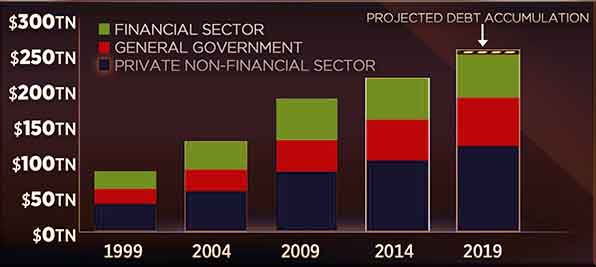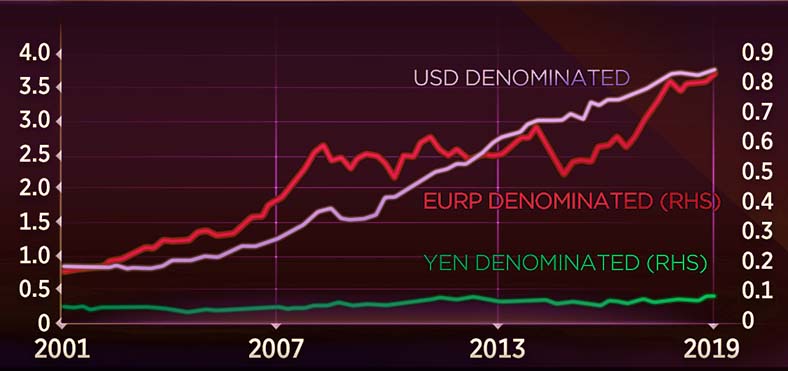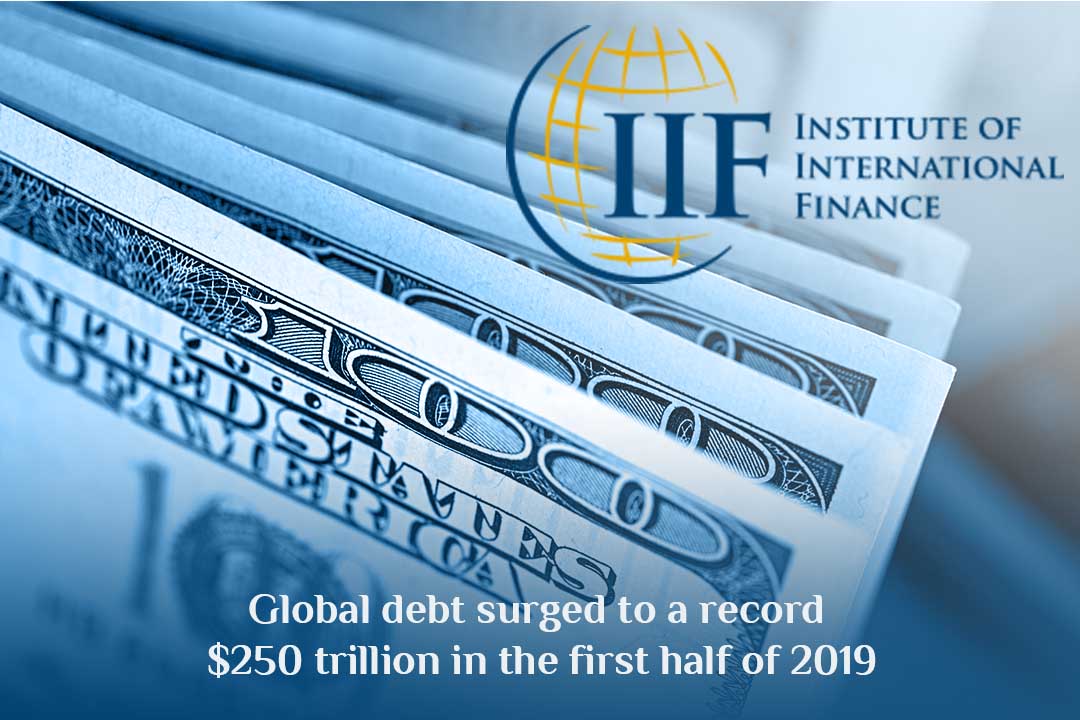According to the latest report, worldwide debt reached a record high of more than $250 trillion in the 1st two quarters of this year because of the surge in borrowings in the United States and China. International Institute of Finance or IIF released the report on Thursday, revealed that global debt surged around $7.5 trillion in the 2019 first half. The IIF said at the end of this period, the global number hit about $250.9 trillion and will surpass $255 trillion by the end of this year.
In the report, IIF said that the United States and China accounted for above sixty percent of the increase. In the same way, EM debt also touches the latest record of $71.4 trillion, which about 220% of GDP. With some signs of decrease in the debt accumulation in the pace and the institute forecast that worldwide debt will exceed $255 trillion in 2019, the report added.
Global Debt, in $ Trillion

Rising debt all over the world is a major concern for investors and also labeled as the next breaking point by a no. of economists. Record low-interest rates make it really easy for sovereigns and corporates to more additional money.
Warnings of the IMF about high Levels of risky corporate debt
Though, with lessening scope for additional monetary easing in several parts of the world, republics with high debt levels of government (Lebanon, Italy) – along with those where government debt growing quickly such as Greece, Brazil, South Africa, and Argentina – may find it tougher to turn to fiscal stimulus. Last month, IMF (the International Monetary Fund) intensified its warnings regarding high levels of perilous corporate debt, that worsened by insistent low-interest rates from central banks. The IMF cautioned that almost forty percent (around $19 trillion) of the corporate debt in big economies like Spain, the United States, Britain, Italy, France, Germany, China, and Japan were at risk of default in the event of another worldwide economic downturn.
Beautiful Sustainable Picture
Yet, central bankers do not look worried because of these rising debts. On Thursday, Jerome Powell, Federal Reserve Chairman, said he doesn’t see signs of any immediate dangers or bubbles brewing posted by trillion-dollar shortfalls. In a testimony before the House Budget Committee, Powell said that if you see today’s economy, nothing that’s really flourishing now that would want to bust. Whereas, we can say that it’s a pretty sustainable picture. Whereas, the IIF report paints a different picture. It states that international government debt will top $70 trillion in this year, up from $65.6 trillion in the previous year, driven higher by the surge in federal debt of the United States.
The major increase in international debt during the past ten years – over $70 trillion – mainly driven by governments as well as by non-financial corporate sector (respectively up by some $27 trillion). For mature markets, the surge primarily been in universal government debt (up to around $17 trillion to more than $52 trillion). Whereas, for rising markets, the rising flood has in non-financial corporate debt (up to around $20 trillion to more than $30 trillion).
Emerging Markets’ FX Debt, in $ Trillion Graph

The International Institute of Finance cities, the excavating of international bond markets as the reason for the, escalate in debt levels. The worldwide bond markets rise from $87 trillion in 2009 to more than $115 trillion in mid-2019. The growth was majorly seen in the govt bond market – which now makes up forty-seven percent of global bond markets compared to forty percent in 2009.
The report stated that the bond universe grown-up quickly in emerging markets, swelling by more than $17 trillion to around $28 trillion since 2009. International government bond market, specifically the so-called safe-haven assets like United States Treasury, have crowded lately as investors move to safer assets amid ambiguity due to Brexit, a worldwide growth slowdown and impeachment inquiry of Donald Trump in the United States.
Read Also: The Largest Trade Agreement of the world could be signed in 2020








